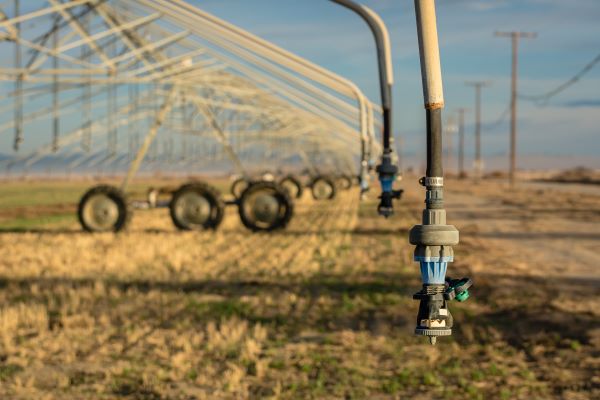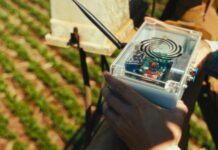Improper irrigation techniques can wash away soil as much as heavy rain can. But watering crops is often crucial to their survival, so farmers must take steps to minimize soil disturbance during the process. Here are five tips for irrigating fields and gardens without causing erosion.
1. Use Sprinkler and Pipe Irrigation
Poor farming practices in Africa contribute to the continent’s erosion problem. In East Africa alone, around 50% of the soil loss by water erosion originates in cropland. Managing crop irrigation has become crucial with the region experiencing severe heat waves and drought.
Low-pressure sprinklers are a good choice for slow and steady irrigation. They work best on flat fields rather than irregular, sloping landscapes where they may contribute to water runoff.
The most effective sprinklers for minimizing erosion spray small droplets over a large radius. Center-pivot sprinklers lead to high water application rates in the outermost part of the pivot and the bigger the pivot, the worse erosion it tends to cause. Special emitters and spray booms are better choices for erosion control.
Similarly, underground pipes can release a trickle of water to thirsty plants without overwhelming the soil and causing water to pool. They can also help excess water drain out as necessary. Low-flow rates are better for erosion control than high-flow rates when watering crops.
2. Plant Crops Closer Together
Tight row spacing can prevent soil erosion from irrigation. The closer plants are together, the more their roots hold down the earth and prevent it from washing or blowing away. Their leaves form a dense canopy that minimizes evaporation and helps shade the plants underneath.
This system also maximizes crop yields so farmers can grow more food in less space. They can plant cover crops in the off-season to minimize soil disturbance.
3. Water Slowly
One of the leading causes of erosion is water flowing too quickly over the soil’s surface. It is especially bad when the soil is very loose or silty.
A certain amount of water may wash away the soil if farmers pour it out all at once, but when spread out over a few hours, it will trickle into the ground. Slow watering prevents soil nutrient loss and allows plants to absorb more water.
4. Put Mulch in Furrows
Erosion often carries soil contaminated with fertilizer, pesticides and animal waste into waterways, contributing to pollution. In fact, over 80% of marine pollution comes from land activities.
Furrows help contain runoff so it cannot leave the pasture. Filling furrows with plant residue or living mulch slows the rate of water loss even further.
This technique is not perfect — digging the furrows takes time and labor, and the trenches require periodic upkeep throughout the year. Mulch can move out of place and cause the water to flow over it into another furrow, and may also cause problems during cultivation. But it is worth it to prevent soil and nutrient loss.
5. Use Reservoir Tillage
Also called basin tillage or dammer diking, creating small divots between crop rows helps prevent soil and water runoff. This technique is similar to furrow mulching and each pit can hold several liters of water. Reservoir tillage is especially useful with sprinkler irrigation in irregular sloping pastures.
Managing Erosion on African Farms
Erosion is a significant problem in Africa and farmers must take steps to prevent it in their growing operations. Irrigating crops too quickly or with the wrong type of watering system are some of the leading causes of soil disturbance. Luckily, it is also possible to hold the soil in place so the next generation of farmers can continue feeding the world.








